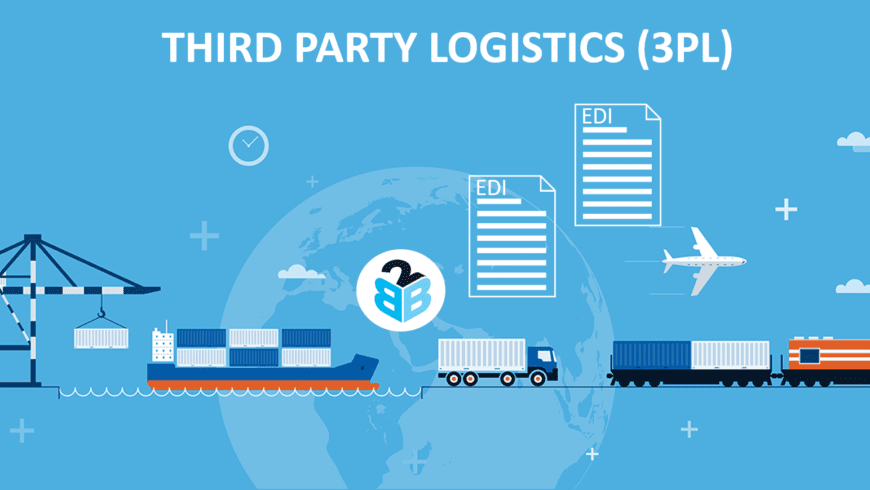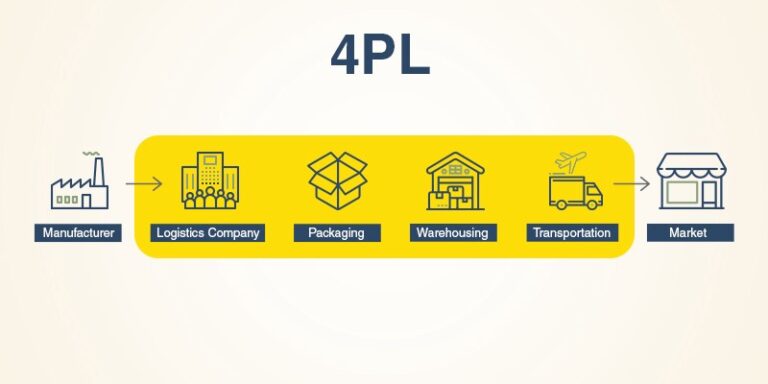Here’s Some Validate Difference Between 3PL and 4PL?
Table of Contents
3PL AND 4PL - Difference between 3pl and 4pl
Understanding the difference between 3PL and 4PL logistics is a critical first step toward deciding which would better optimize your business’s supply chain management.

3PL AND 4PL – Difference between 3pl and 4pl
3PL – Third Party Logistics
In a 3PL model, an enterprise maintains management oversight, but outsources operations of transportation and logistics to a provider who may subcontract out some or all of the execution.
The 3PL model is where a manufacturer maintains oversight of their supply chain but outsources their transportation and logistics operations to a 3PL provider.
Most of the time, a 3PL will be receiving, handling, storing and delivering your goods. Usually, they will do so under the name of your business not theirs. This isn’t a large distinction for many companies but is an important one for some.
What Does a 3PL Company Specialize In?
3PL companies tend to specialize in:
- Inbound and outbound freight
- Customs
- Freight consolidation
- Warehousing
- Distribution
- Order fulfillment
- Cross-docking
- Inventory management
All of the above third party logistics services are scaled and customized to a client’s requirements. One client may not require warehousing, whereas another will, which is why 3PL companies are adept at providing different services to different clients. The services offered by a 3PL company can include all of the above, more, or even as few as one.

3PL AND 4PL – Difference between 3pl and 4pl
4PL - Fourth Party Logistics
In a 4PL model, an enterprise outsources management of logistics activities as well as the execution across the supply chain. The 4PL provider typically offers more strategic insight and management over the enterprise’s supply chain.
Fourth-party logistics, also known as 4PL or lead logistics providers, is a logistics model in which manufacturers outsource both the organization and oversight of their supply chain to a 4PL provider.
4PL generally offer a high level of effective supply chain management to customers, allowing manufacturers to outsource their logistical process to third-party professionals in order to manage it efficiently.
What Does a 4PL Company Provide?
4PL companies tend to provide (generally through 3PL partners):
- Distribution
- Procurement
- Storage

3PL AND 4PL – Difference between 3pl and 4pl
Blog Image: Logistic Industry in india
Difference between 3pl and 4pl
The main difference between 3PL and 4PL is that a 4PL handles the entirety of a supply chain while a 3PL is mainly concerned with handling just the logistical process.
Difference between 3pl and 4pl is hotly debated between companies these days as to which model is superior. Ultimately, each one works better for different situations and understanding how their differ is crucial for every company.
The main difference between 3PL and 4PL is that a 4PL handles the entirety of a supply chain while a 3PL is mainly concerned with handling just the logistical process.
3PL and 4PL is hotly debated between companies these days as to which model is superior. Ultimately, each one works better for different situations and understanding how their differ is crucial for every company.

3PL AND 4PL – Difference between 3pl and 4pl
Some of the key difference between 3PL and 4PL include:
- Fourth party logistics are generally better suited for medium-to-large businesses, while third party logistics are more suitable for small-to-medium businesses.
- Fourth party logistics functions at the optimization and integration level while third party logistics focuses more on daily operations.
- Fourth party logistics providers may own assets like trucks and warehouses while third party logistics providers generally don’t own such assets.
- Fourth party logistics companies can effectively coordinate the activities of third party logistics providers.
- Fourth party logistics provides the highest level of logistics services for a great value while third party logistics is more focused on one-off transactions.
- Fourth party logistics provider maintains a single point of contact for every business’ supply chain while with third party logistics, businesses often must take care of certain aspects of the supply process internally.
According to the CSCMP, Difference between 3pl and 4pl are follows :
1) 4PL organization is often a separate entity established as a joint venture or long-term contract between a primary client and one or more partners;
2) 4PL organization acts as a single interface between the client and multiple logistics service providers;
3) All aspects (ideally) of the client’s supply chain are managed by the 4PL organization; and,
4) It is possible for a major third-party logistics provider to form a 4PL organization within its existing structure.[2]
The CSCMP defines a 4PL company as a “supply chain integrator that assembles and manages the resources, capabilities, and technology of its own organization with those of complementary service providers to deliver a comprehensive supply chain solution.”[3] Essentially, what this means is that a 4PL company deals with the planning, management, designing, and optimization of a supply chain from start to end and does so by outsourcing the services it needs to trusted companies.
Ultimately, the difference between a 3PL and 4PL is that the 4PL acts as a liaison between the client and multiple service providers, whereas a 3PL offers its own logistics services directly to the client. So for example, your company might contract with logistics supplier X to handle shipping and remote storage of your products across the southern United States. If supplier X then contracts with another company for warehousing the goods, supplier X is now a 4PL provider.
UNDERSTANDING THE DIFFERENCE BETWEEN 3PL AND 4PL
3PL
- A 3PL logistic provider gives it’s customers, services for part, or all of their supply chain managment function
- A 3PL supply chain focuses on niche aspects and excels at providing services it excels in.
- The 3PL model is where a manufacturer maintains oversight of their supply chain but outsources their transportation and logistics operations to a 3PL provider.
4PL
- A 4PL provider accumulates resources, capabilities and technologies to run complete supply chain solutions.
- A 4PL provider targets a broad array of solutions to manage the enitire supply chain process. 4PL Services can include 3PL managment .
- 4PL generally offer a high level of effective supply chain management to customers, allowing manufacturers to outsource their logistical process to third-party professionals in order to manage it efficiently.




